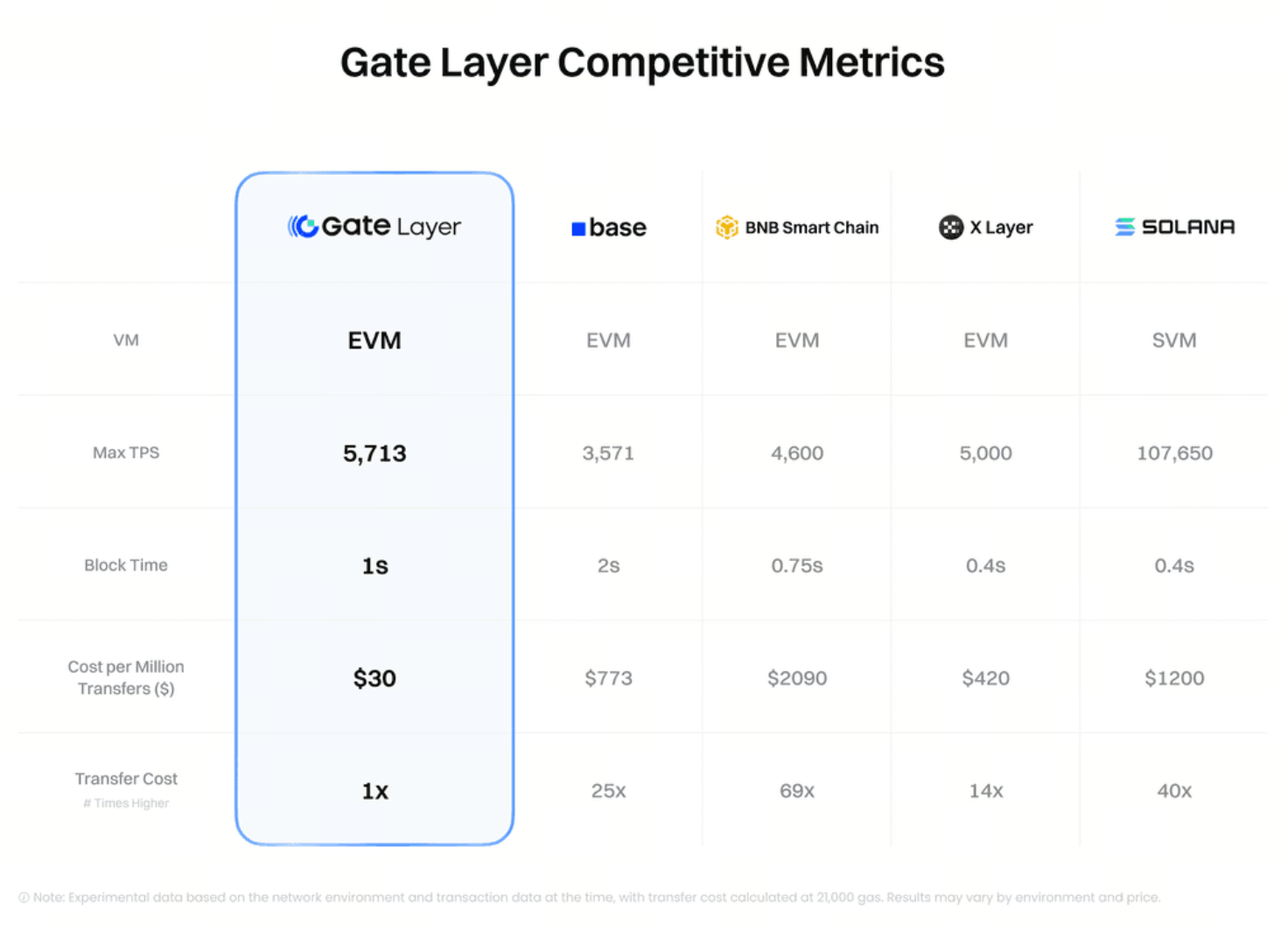Gate Layer Driving Web3 Infrastructure Upgrade with High Performance and Low Costs
A New Chapter in Web3 Infrastructure
As blockchain technology advances toward widespread adoption, infrastructure efficiency and transaction cost have become driving forces for industry growth. Gate’s recent launch of Gate Layer combines Layer 2 network technology with an enhanced GT token, delivering a more stable, secure, and cost-effective Web3 experience for both developers and users.
Gate Layer: Technical Advantages
Gate Layer is built on the OP Stack architecture with Gate Chain serving as its settlement layer. Its full EVM compatibility allows developers to seamlessly migrate existing DApps and quickly integrate into the Web3 ecosystem.
Core Features
- Full EVM Compatibility: Supports mainstream Ethereum tools and applications.
- Dual Security Mechanisms: Network protection through Gate Chain and GT staking at two layers.
- High Performance: Achieves up to 5,700 TPS with an average block time of just one second.
- Ultra-Low Transaction Fees: More competitive costs than other leading Layer 2 blockchains.
- Cross-Chain Integration: Built-in LayerZero support for major ecosystems like ETH, BSC, and Polygon.
Cost Advantages
Processing one million transactions on Gate Layer costs approximately $30, a stark contrast to Base ($700), BSC ($2,000), and Solana ($1,000). This cost advantage makes Gate Layer highly attractive for large-scale Web3 applications.

Diversified Ecosystem Development
Gate Layer is more than a technical chain; it serves as a platform for Web3 innovation. Upcoming releases include:
- Perp: A decentralized perpetual contract platform prioritizing liquidity and user experience.
- Gate Fun: A zero-code token issuance tool empowering teams to launch projects quickly.
- Meme Go: A cross-chain meme coin tracker covering multi-chain assets such as ETH, BSC, and Solana.
New Role for the GT Token
The launch of Gate Layer further strengthens GT’s value in the ecosystem:
- Gas Token Functionality: All on-chain activities—smart contracts, NFTs, and cross-chain transactions—require GT.
- Dual Deflationary Model:
- Scheduled Burns: By Q2 2025, over 60% of the total supply will have been burned.
- On-Chain Burning: With EIP-1559, base transaction fees are automatically burned, increasing GT scarcity.
Gate Chain Upgrades
To support broader application scenarios, Gate Chain has upgraded to consensus version v1.20, delivering:
- Support for EIP-4844 blob transactions to accelerate data handling.
- Upgrade to the Cancun EVM upgrade for technical parity with Ethereum.
- Support for multiple protocols, including EIP-2565 and EIP-2929.
- Enhanced RPC interface for an improved developer experience.
Conclusion
The launch of Gate Layer marks not only a technical advancement but also a pivotal step in Web3 infrastructure. With high performance, low-cost solutions, and an upgraded GT economic model, Gate is driving a more open and sustainable decentralized ecosystem, unlocking expanded opportunities for developers and users alike.
Related Articles

2025 BTC Price Prediction: BTC Trend Forecast Based on Technical and Macroeconomic Data

Pi Coin Transaction Guide: How to Transfer to Gate.com

Flare Crypto Explained: What Is Flare Network and Why It Matters in 2025

How to Use a Crypto Whale Tracker: Top Tool Recommendation for 2025 to Follow Whale Moves

What is N2: An AI-Driven Layer 2 Solution
